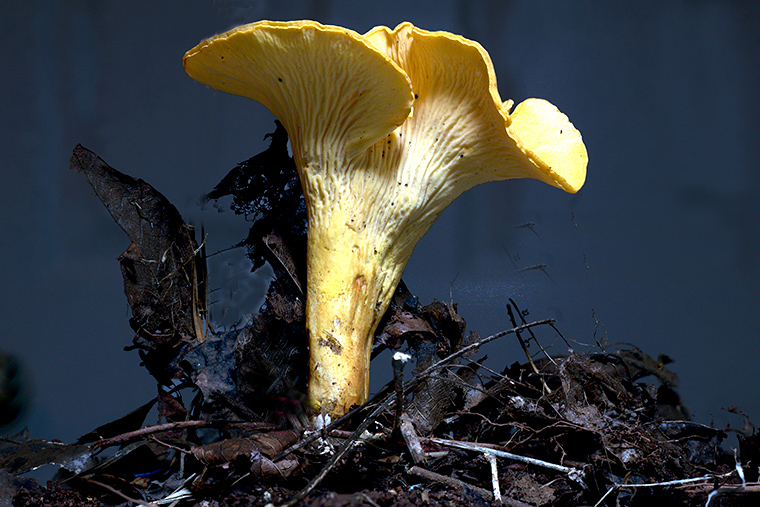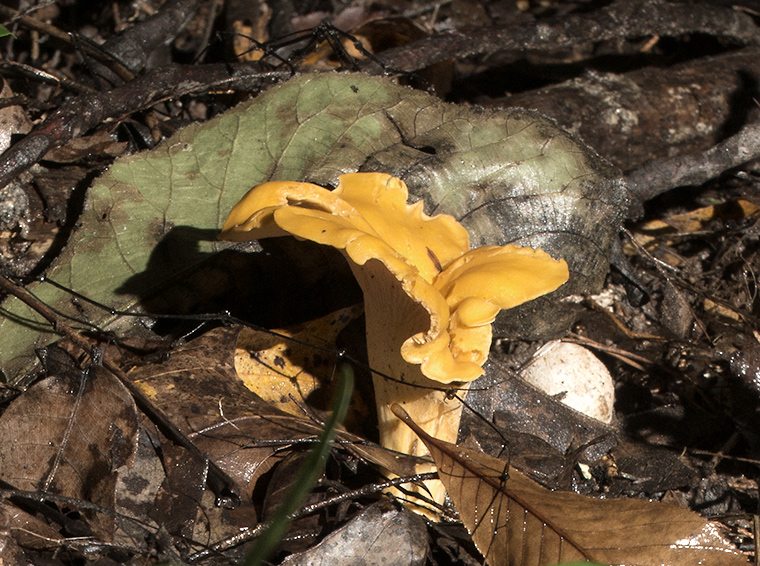Here is a welcome sight. This is a Chanterelle (Cantharellus cibarius) mushroom, one of the most distinctive and delicious of our native mushrooms. Cantharellus means “drinking cup” and cibarus comes from a Latin word for food. So the scientific name can be translated as “a little drinking cup that you can eat”.
This year lots of Chanterelles have appeared in our woods, and it was easy to collect enough for a meal. They are reasonably easy to identify and collect. Their bright yellow-orange color and their trumpet-like shape stand out. They are really easy to spot against the brown color of the leaf litter. In addition, they have ridges on the underside rather than the gills characteristic of most mushrooms. These ridges divide and subdivide, but it is clear that they are not gills.
We have lived in our present location for a little more than 20 years, but Chanterelles have appeared only sporadically. The last time they were present was about four years ago. They seem to be associated with unusually rainy Spring seasons, but there may be other contributing factors. Chanterelles are mycorrhizal with certain types of trees, so they tend to appear in the same locations time after time. (Mycorrhizal means they interact with small roots of plants, usually trees.) Filaments of the fungus wrap around the tree rootlets and the two organisms interact in a way that is beneficial to both. The trees provides water and nutrients to the fungus, and the fungus helps the tree to absorb minerals from the soil. The fungus may also provide some disease resistance to the tree.) Mycorrhizal fungi, such as the Chanterelle, cannot grow without their host tree, so Chanterelles cannot be grown in culture. They must be collected from the wild, and are very expensive to buy on the open market.
The standard warning applies. Do not consume any wild mushroom unless you are absolutely sure of its identity! There are many poisonous species out there, some of which could be easily mistaken for a Chanterelle,
Discover more from A Naturalist's Journal
Subscribe to get the latest posts to your email.


